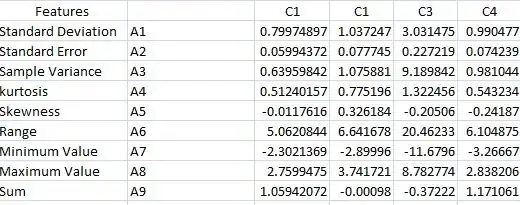Briefly: I want to run a PCA on 2-dimensional data, both for the purposes of dimension reduction and capturing greater variance. I know it can be done (e.g., in R, running prcomp on 2-dimensional data works without errors or warnings), but just because something can be done doesn't mean it should be done (e.g., Doing principal component analysis or factor analysis on binary data). Is there anything wrong, theoretically or practically, with running a PCA on 2-dimensional data?
In context: I'm looking at distributions of vowels, which are typically described in terms of two acoustic measures: F1 and F2. These measures are typically modeled separately, but I'm seeking to model them together because they covary. Below is an example of one speaker's distribution of KIT vowels (the vowel in the words hit, sit, etc.) in F1~F2 space. It's clear that there's considerable covariance in F1 and F2 here, so modeling F1 by itself would miss what's going on in F2 (and vice versa).

The reason I want to turn to PCA, then, is that the axis that captures the most variance in a given speaker's distribution of a given vowel is unlikely to be the F1 or F2 axis, but a tilted axis. Running a PCA on standardized (F1, F2) values is a way to find the tilted axis that best captures a speaker's vowel distribution, as well as where individual tokens lie on this axis. As there doesn't seem to be much out there on running PCA on 2-dimensional data (aside from demos with toy data, like Making sense of principal component analysis, eigenvectors & eigenvalues), though, it's not clear to me whether there's anything wrong with it.